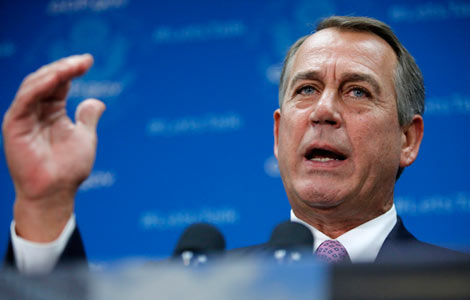WB cuts growth forecast for China, East Asia
Updated: 2013-10-08 09:14
(Xinhua)
|
|||||||||
However, the economies should also be better prepared for potentially disruptive adjustments.
Hofman said the United States' rewinding of its quantitative easing and loose monetary policy will come a time when the economic growth in the world's largest economy is sustainable.
"Tapering will start. It won't start at a bad time. Therefore the pluses of a thriving United States, which will have lots of import demand from the region, will, in our view, benefit the region," Hofman told reporters.
Speculation about the withdrawal of quantitative easing in the United States led to stock market sell-offs and currency depreciation in countries with large foreign participation in their financial markets over the past few months.
Hofman said the World Bank does not have any specific number on the amount of capital outflow from the emerging markets.
Nevertheless, the World Bank report said that the net capital flows to developing countries between 2008 and 2012 rebounded from $490 billion to $800 billion. Flows to the East Asia and Pacific region more than doubled to $460 billion.
Hofman also said that the Federal Reserve's decision to delay the tapering of its quantitative easing will give authorities in the emerging economies a second chance to take measures to lower risks from future volatility.
Adjustment is already happening. One would actually expect that maybe once it happens, there might be "less volatility than what we saw," he said.
a

 Firming friendships
Firming friendships
 A smog-filled Beijing targets polluting cars
A smog-filled Beijing targets polluting cars
 Animal welfare to be added in training
Animal welfare to be added in training Chasing the dragons
Chasing the dragons
 Boehner: US on path to default if Obama won't negotiate
Boehner: US on path to default if Obama won't negotiate
 New couples take wedding photos during holiday
New couples take wedding photos during holiday
 Williams beats Jankovic to win second China Open title
Williams beats Jankovic to win second China Open title
 Red alerts as Fitow closes in
Red alerts as Fitow closes in
Most Viewed
Editor's Picks

|

|

|

|

|

|
Today's Top News
WB cuts growth forecast for China, East Asia
Kerry hails weapons destruction
Robust home sales during holiday
China calls on the United States to stay solvent
Beijing targets polluting cars
APEC 'should take lead' in FTA talks
US, Japan warned over sea issues
Academics evaluate China at conference
US Weekly

|

|







